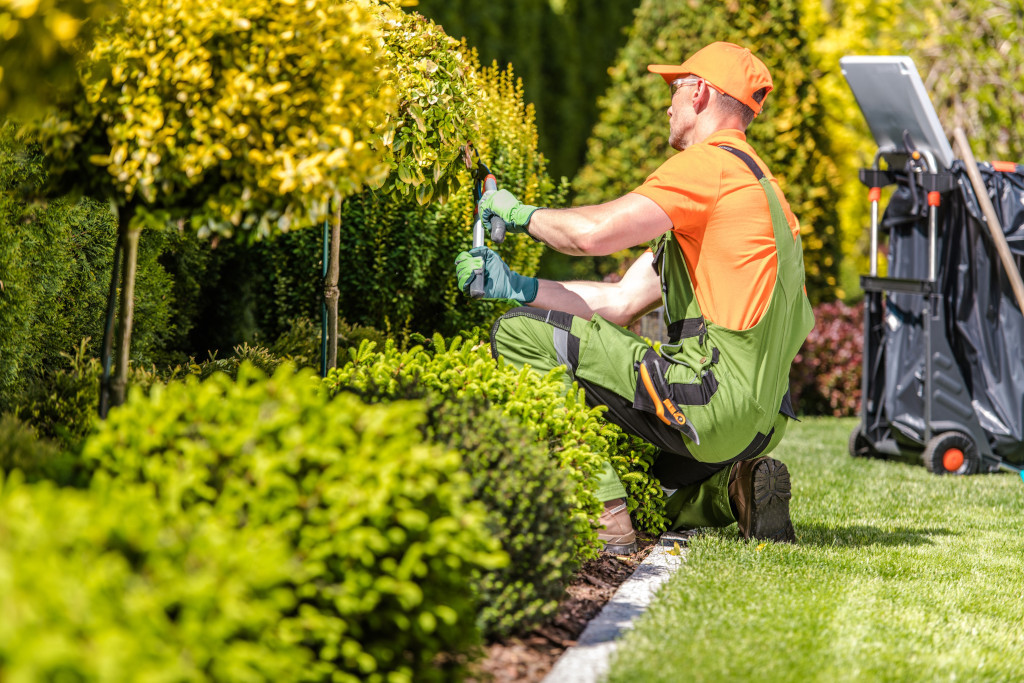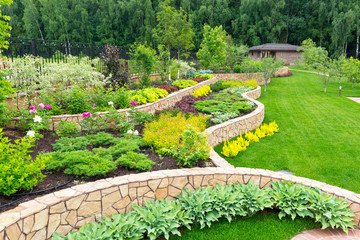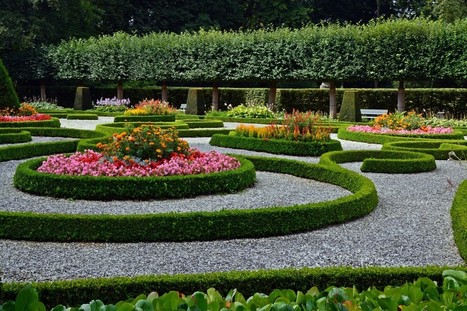
How to Plan Landscaping Designs
The foundation of effective landscape designs is a good relationship between landscape areas. One way to do this is by creating a continuous lawn that links one area to the next. Otherwise, separate areas may be bounded off with plants or physical boundaries. In any case, they should be connected in some way. A simple rule of thumb is to avoid completely separating landscape areas.

The formal style in Landscaping designs focuses on order, geometric shapes, and perfection. It aims to create an exquisite, symmetrical environment that is both beautiful and calming. This style originated in the ancient Greeks, who were fascinated by geometry and symmetry. A formal landscape will generally feature a centerpiece to attract the viewer’s eye and enhance the visual appeal of the space.
The formal style in landscaping designs can also be a blend of formal and informal elements. The garden features a long, straight pathway that funnels the eye toward the grand house. It also features potted citrus trees and in-ground plantings, whether a formal design or an informal one; formal garden designs are often characterized by straight edges, long sightlines, and other elements that emphasize order and structure.
In modern formal landscaping designs, plants are chosen with attention to style and size. For instance, low boxwood hedges create symmetry and add interest to the garden by creating planting pockets. Other materials can be used to create texture, such as bark or branches. These materials can make the design appear more natural and elegant.
A classic example of formal design is the Palace of Versailles. The garden there contains many formal elements such as lawns and flower beds. This style is often a blend of traditional and contemporary designs. While it may seem more formal than modern styles, formal landscaping is a timeless choice for garden enthusiasts. This style is not just for the wealthy.
Formal style is not only timeless but also easy to adapt. Whether your home is in the desert, alpine, or tropical, formal gardens can be adapted to fit any outdoor space. Its clean lines and geometric shapes make it easier to mix and match various styles. Formal garden designs are often inspired by typical French or English gardens. The basic design principles for a formal landscape garden are balance and cohesion. Use the right plants to complement the style of the home.
Using Native plants in your landscaping design can be a great way to add a natural feel to your yard. You can use mass plantings, low areas at the front of your garden, or build around native plants. The key to a successful native garden design is keeping it natural and flowing. If you are creating a new garden, you can even use a design template to get started.
When you plant a native plant, you’re not only giving your yard a look that will be pleasing to the eye, but you’re also helping pollinators. In addition to attracting pollinators, native plants will also help improve the health of your soil and water. For example, if you’re planning a perennial border, consider using a mix of native flowers to attract pollinators.
Native plants have specific growing conditions, so you’ll have to pay extra attention to them. For example, sun-loving native plants need six hours of direct sunlight, while shade-loving ones need less sunlight. Matching native plants with your climate is crucial for a carefree landscape. Choosing plants that grow well in your climate will also reduce the amount of maintenance you have to do.
Native plants can make your yard look beautiful throughout the year and are an excellent choice for people who want to conserve the environment. A well-designed native landscape can transform a private yard into a wildlife-friendly habitat. And with the right design, natives can fit into any residential landscape.
The best way to incorporate native plants in landscaping designs is to start with the basic elements. These include soil conditions. You may need to remove invasive species and amend the soil before installing native species. Depending on your specific landscaping design, you can also add some mulch or organic matter to improve the soil conditions and limit weed growth.



